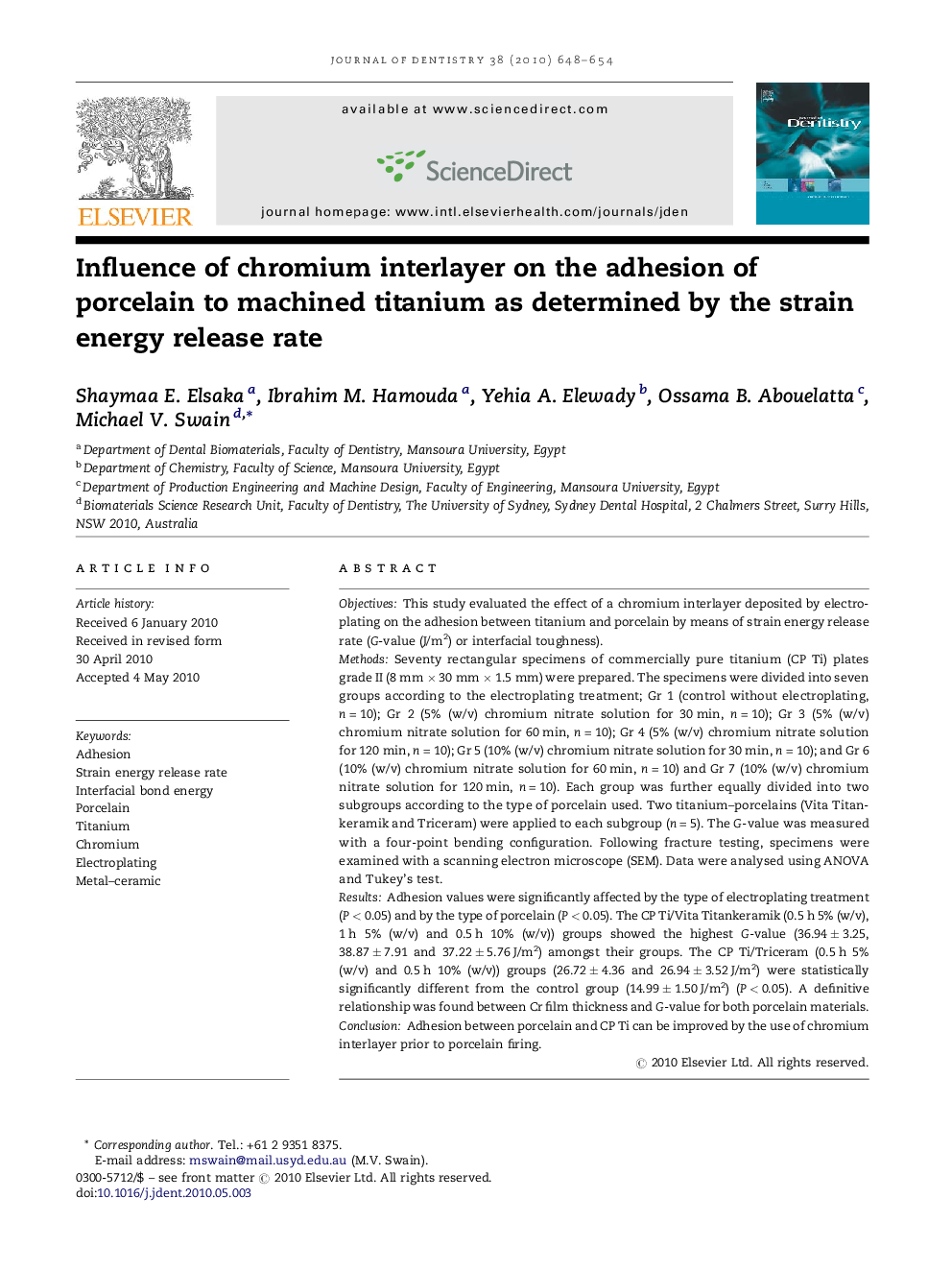| کد مقاله | کد نشریه | سال انتشار | مقاله انگلیسی | نسخه تمام متن |
|---|---|---|---|---|
| 3145276 | 1197062 | 2010 | 7 صفحه PDF | دانلود رایگان |

ObjectivesThis study evaluated the effect of a chromium interlayer deposited by electroplating on the adhesion between titanium and porcelain by means of strain energy release rate (G-value (J/m2) or interfacial toughness).MethodsSeventy rectangular specimens of commercially pure titanium (CP Ti) plates grade II (8 mm × 30 mm × 1.5 mm) were prepared. The specimens were divided into seven groups according to the electroplating treatment; Gr 1 (control without electroplating, n = 10); Gr 2 (5% (w/v) chromium nitrate solution for 30 min, n = 10); Gr 3 (5% (w/v) chromium nitrate solution for 60 min, n = 10); Gr 4 (5% (w/v) chromium nitrate solution for 120 min, n = 10); Gr 5 (10% (w/v) chromium nitrate solution for 30 min, n = 10); and Gr 6 (10% (w/v) chromium nitrate solution for 60 min, n = 10) and Gr 7 (10% (w/v) chromium nitrate solution for 120 min, n = 10). Each group was further equally divided into two subgroups according to the type of porcelain used. Two titanium–porcelains (Vita Titankeramik and Triceram) were applied to each subgroup (n = 5). The G-value was measured with a four-point bending configuration. Following fracture testing, specimens were examined with a scanning electron microscope (SEM). Data were analysed using ANOVA and Tukey's test.ResultsAdhesion values were significantly affected by the type of electroplating treatment (P < 0.05) and by the type of porcelain (P < 0.05). The CP Ti/Vita Titankeramik (0.5 h 5% (w/v), 1 h 5% (w/v) and 0.5 h 10% (w/v)) groups showed the highest G-value (36.94 ± 3.25, 38.87 ± 7.91 and 37.22 ± 5.76 J/m2) amongst their groups. The CP Ti/Triceram (0.5 h 5% (w/v) and 0.5 h 10% (w/v)) groups (26.72 ± 4.36 and 26.94 ± 3.52 J/m2) were statistically significantly different from the control group (14.99 ± 1.50 J/m2) (P < 0.05). A definitive relationship was found between Cr film thickness and G-value for both porcelain materials.ConclusionAdhesion between porcelain and CP Ti can be improved by the use of chromium interlayer prior to porcelain firing.
Journal: Journal of Dentistry - Volume 38, Issue 8, August 2010, Pages 648–654